Miss Lulu Bett (1921)
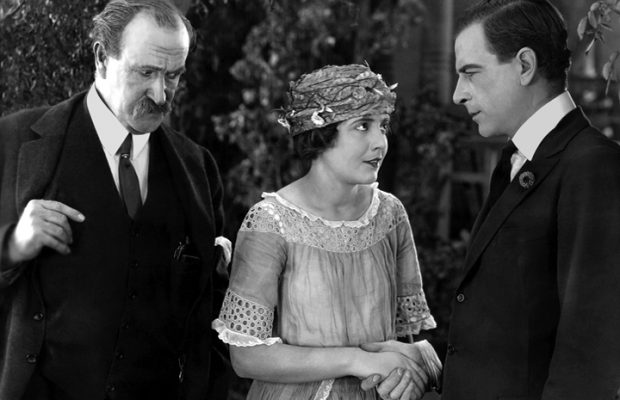
Toronto Film Society presented Miss Lulu Bett (1921) on Monday, March 8, 1965 as part of the Season 17 Monday Evening Silent Film Series, Programme 5.
~~~~~~~~~~~~~~~~~~~~~~~~~~~~~~~~~~~~~~~~~~~~~~~~~~~~
Program No. 5
Monday March 8, 1965
Two films of 1921:
Never Weaken (2 reels)
Miss Lulu Bett (7 reels)
~~~~~~~~~~~~~~~~~~~~~~~~~~~~~~~~~~~~~~~~~~~~~~~~~~~~~~~~~~~~~~~~~~~~~~~~~~~~~
Never Weaken
Association Exhibitors
Authors: Sam Taylor & Hal E. Roach
Starring Harrold Lloyd
Supporting cast: Mildred Davis, Roy Brooks, Mark Jones, Charles Stevenson
Copyright: 28 September, 1921
Unfortunately there is some footage missing from this print. After Harold discovers his girl in another man’s arms, and withdraws crestfallen to his own office a subtitle (obviously inserted to cover the gap, for the typography doesn’t match that of the other titles) says “Heart-Broken Harold decides to end it all”,–and then we cut to the latter end of a sequence in which (in the missing part) he tried and rejects various ways of committing suicide (like pointing a revolver to the middle of his forehead, but changing his mind because this makes him crosseyed!) before he hits upon the Rube Goldberg-like method which he is in the midst of setting up as we come in. (There is a print at Rochester which contains most of the missing section, though it too leaves out the above-mentioned revolver gag).
HAROLD LLOYD was born in Nebraska in 1893, and went into films in 1914. He starred in a successful series called Lonesome Luke for several years before he turned to the bespectacled character he has since become identified with. (Bebe Daniels was his leading lady in many of the Luke films and the first few Harold comedies. Her successor was Mildred Davis, whom he married). His type of humor did not suffer when sound came in, and he made several successful films throughout the thirties, the last being Professor, Beware (1938), recently seen on television. He was in Toronto for the 1962 Shriners’ Convention and took part in the parade.
Miss Lulu Bett
Released by Paramount
Produced and directed by William deMille
Adapted from the novel and play by Zona Gale
Editor, Clara Beranger
Featured players: Lois Wilson, Milton Sills, Theodore Roberts
Copyright: Famous Players-Lasky Corp., 7 December, 1921
“William deMille was expert at spotting in literary material what could be transformed into imagery. He sought the camera equivalent of words. The photographic naturalism of this version of Zona Gale’s popular story was considered advanced and even dangerous, but it surprised its studio by making money. Small town audiences of the budding Jazz Age saw in it a credible and sympathetic portrait of themselves”. (Museum of Modern Art FILM NOTES)
* * *
The author, ZONA GALE (1874-1938) was born in Wisconsin, and became known for her short stories of Wisconsin life, collected in such volumes as Friendship Village (1908), Yellow Gentians and Blue (1927) and Bridal Pond (1930). She also wrote several novels, including Romance Island (1906), Birth (1918), Miss Lulu Bett (1920), Faint Perfume (1923), Prelude to a Life (1926), Borgia (1929) and Papa la Fleur (1933). Her three full-length plays are dramatizations of her novels Birth (as Mister Pitt), Miss Lulu Bett and Faint Perfume.
Miss Lulu Bett was produced at the Belmont Theatre, New York, December 27, 1920, and won the Pulitzer Prize for 1920-21. (The text of the play can be found in the volume “The Pulitzer Prize Plays 1918-1934”, a copy of which is in the Theatre section of the Toronto Public Library).
For those who are interested in comparing it with what they see on the scree, here is a synopsis of the novel, as given in the Oxford Companion to American Literature (and you may prefer to skip this until after you’ve seen the film):
Lulu Bett, a spinster, earns her keep by serving as the household drudge in the Wisconsin home of her sister, Ina Deacon, and her husband Dwight. She is scorned because she is plain and unmarried, and the family’s conception of her is thoroughly upset when she marries Dwight’s worldly brother, Ninian. When Ninian tells her that he does not know whether his first wife is dead, Lulu returns to the banal and complacent Deacons, who taunt her further, insisting that Ninian has tired of her. Not willing to give her the satisfaction of telling the neighbors that he really loved her, for fear that the scandal of the bigamy will hurt the family, they force her to make the neighbors believe that she has left her husband because of her inability to be a good wife. The play was presented with two endings. In both of them, Lulu rouses her courage to show the Deacons their unselfish meanness, but in the first Ninian finds his former wife dead and comes back to claim Lulu, while in the second she leaves without solace, to find her own place in the world.
(It is the first ending which is found in the publication mentioned above).
* * *
LOIS WILSON was born June 28, 1896, in Pittsburgh, though she grew up in Birmingham, Alabama. Her father was Canadian-born, and she often spent summer holidays with her grandparents in Brampton. She intended to become a school teacher, but winning a local beauty contest apparently gave her a taste for show biz, for in 1915, while visiting relatives in Chicago, she went to the film studios there and got a job as an extra during the filming of The Dumb Girl of Portici (starring Anna Pavlova). Soon she was in Hollywood, and by 1918 was being seen in leading roles. She never did become an actual “star”, but was a prominent and popular “featured player” throughout the 1920’s, playing mostly nice, wholesome girls*,–though William deMille, used her in many of his films, cast her against type as May McAvoy’s mother in Only 38 (1923). (“Start playing mothers when you are young”, deMille advised her, “and you’ll never grow old in the theatre”). She was the heroine in The Covered Wagon (1923) and played opposite Valentino (along with Bebe Daniels and Doris Kenyon) in Monsieur Beaucaire (1924). She continued into early talkies but in the mid-1930’s she left Hollywood and went on the stage, and appeared in a few Broadway productions (including Chicken Every Sunday and Mermaids Singing) and considerable summer stock and road companies, and has remained active as an actress ever since, on stage, screen and television (she was the mother in the Aldrich Family series on TV some 15 years ago). As recently as the summer of 19960 she was playing the mother in John Loves Mary at the New Music Fair at nearby Dixie Plaza.
*(FOOTNOTE): William deMille in his autobiography tells an amusing story of directing her in her first passionate love scene. “Lois had great natural talent, within the range of her knowledge, but she had been raised in the bosom of the family, where men were brothers, and she had a virginal quality that was as hard to shake as Gibraltar”. The film was Midsummer Madness (1920), in which she played the part of a young wife who is “swept by a sudden wave of the cosmic urge” into the arms of her husband’s best friend. “Lois’s demeanor during the seduction scene suggested that of a little girl going up to be confirmed, and her great kiss of passion reminded me of an innocent, carefree lassie bidding Grandpa good-by for the holidays”. DeMille tactfully and gently talked to her for about two hours, giving her “a brief outline of the sweet mystery of life. I started with the flowers, the birds and the bees and ended with thumbnail sketches of the Decameron”, and finally “talked her into an emotional coma” and filmed the scene. “It was good, surprisingly good; and I chuckled when Lois came to me, wide-eyed, a month later and told me that her mother had seen the film and had said: ‘My dear, I think it will be some years before you know how well you played that scene’”. (Incidentally, Lois Wilson never did marry).
MILTON SILLS was born in Chicago, January 10, 1882. Like many others he began his acting career on the stage, but he was in films by 1915. His rugged but dignified good looks were independent of youth, and he was most popular all through the 1920’s when he was in his forties. He was good in all sorts of parts: swashbuckling costume roles as in The Sea Hawk, and society roles as in Cecil DeMille’s Adam’s Rib, or dinner pail roles as in Men of Steel;–“in fact, he played in everything that a ‘popular’ actor should, from westerns to comedies, from roaring melodramas like Valley of the Giants to charming domestic trifles like Miss Lulu Bett—just like a contemporary equivalent, Gregory Peck”. (Joe Franklin in Classics of the Silent Screen). He was well equipped to have gone even further in sound films, but he died in 1930 after making only one talkie, The Sea Wolf. He is still affectionately remembered by his fans. (His wife was another prominent screen player of the period, Doris Kenyon).
THEODORE ROBERTS was born in San Francisco, October 2, 1861, and was one of the many stage stars who were brought into films around 1921, and one of the relatively few who stayed there. He was a very popular character actor on the screen in the late ‘teens and early ‘twenties. He appeared in many of the films of both William and Cecil DeMille—he was the father in Male and Female (shown in the Silent Series two years ago) and was Moses in The Ten Commandments (1923). He died December 14, 1928, at the age of 67.
* * *
WILLIAM CHURCHILL deMILLE was born in Washington, North Carolina, on July 25, 1878. His autobiography, Hollywood Saga (1939) is recommended as a highly entertaining and informative book about Hollywood’s early years. It is no longer in print, of course, but you’ll find a copy in the Theatre section of the Toronto Public Library. (Unfortunately for our present purposes, he doesn’t even mention Miss Lulu Bett).
(We also recommend the autobiography of his daughter, Agnes de Mille: Dance to the Piper, the opening chapters of which describe her early years in Hollywood,–and also his younger brother Cecil’s Autobiography).
Cecil’s book, by the way, clears up the matter of the spelling of the family name:
Every so often someone asks me if my name should be spelled with a capital D or a small “d”. He usually asks me in a shy, tentative sort of way, as if he did not really expect me to be sure myself. There are about a dozen different spellings in the family records. The oldest seems to be DeMil. I have used that so far in these pages to avoid confusion, although DeMille, with an “e” on the end, appears for the first time in 1747, but DeMill, Demill, and other variations keep cropping up until my father’s time. He spelled it and made it well known in the theatre as DeMille. Sometime after his death, the family went back to the original small ”d” for personal use, but kept the capital D for professional use. My brother and I have followed that rule”.
Except that William sees to have abandoned the capital D even as a professional name, and we shall refer to him hereafter as “deMille”. (Agnes makes two separate words of it: de Mille).
The deMilles were descended from an old Dutch family that moved to New Amsterdam in 1658. Henry DeMille, the father of William and Cecil, was a teacher, a divinity student, and eventually a playwright, working in collaboration with David Belasco. After his death in 1893, his widow and two sons drifted into the theatre themselves. William as a playwright, Cecil as an actor, writer and director, and their mother as a theatrical agent. Ultimately Cecil teamed up with the vaudeville producer, Jesse Lasky, for the production of operettas; and this partnership led in 1913 to the two of them, with Lasky’s brother-in-law, Samuel Goldwyn, deciding to take a crack at producing motion pictures. They went out to California and set up a studio in a suburb of Los Angeles called Hollywood, and made a film version of the play The Squaw Man which became such a financial success that the Lasky Feature Film Company settled down to make this a permanent business. (In 1916 it merged with its rival, Famous Players, and later took the name of its distributing company, Paramount).
William, who had prudently refused to have anything to do with such a foolhardy enterprise, was now persuaded to come out to Hollywood (in the fall of 1914) as script writer for the company. The day he arrived he was whisked off to the location where Cecil was shooting The Rose of the Rancho, and before he quite knew what had happened to him he was on horseback, making like a cowboy before the grinding cameras. It was, as Cecil has written, “a good introduction to the difference between stage and screen, and Bill’s indoctrination advanced rapidly as in the next weeks we went together through all the phases of movie-making, 1914 vintage. It was a heady wine, and Bill was soon caught up in the enthusiasm of it. His good mind was soon aware that one could not just write a play and photograph it. He discovered that the camera had its own language, its own advantages, its own limitations, and that a screenwriter must write in that language, always conscious of what the camera cannot do as well as what it superlatively can do”.
William’s job as a screen-play writer (a fairly new job then; directors mostly either wrote their own scripts or worked without one) soon expanded to a script department, with several writers under him, and before the end of 1915, having like all authors chafed over the way directors mistreated his scripts, he finally sought and received permission to direct his own plays,–the first being The Ragamuffin (1915) starring Blanche Sweet (and with his 10-year-old daughter Agnes playing the heroine as a child).
The first important discovery I made in my new capacity was that the director’s point of view was not nearly as unreasonable as I had supposed. Faced by the necessity of handling my story in four dimensions (time being the fourth) I soon found that certain scenes, which read like little masterpieces on paper, began to resemble cartoons if produced too literally. As a writer I had always tended to resent the director’s screams that this scene wouldn’t move or that one wouldn’t time; now, as director, my own screams were all the more uninhibited by the fact that I alone was the writer. During the course of my first picture as director, I used language about the damn fool who wrote the script that I feel sure I would have taken from no one else.
But we must resist the temptation to quote copiously from Hollywood Saga, though these notes would be far more entertaining if we did. We can only re peat our recommendation to read the book for yourselves. Briefly, William deMille directed films from 1915 to 1941. He was always more highly regarded by the critics than his brother was, though the latter was the big name with the public. They were quite different in the styles; as Cecil concedes. “His taste in drama differed from mine as a cameo maker’s differs from that of a painter who loves a big canvas; and a cameo can be as beautiful as a huge mural”.
In 1941 he founded and became professor of the Drama Department of the University of Southern California. He retired in 1953; and he died at his home in Plaza del Rey, California, on March 5, 1955 (ten years ago last Friday).
A few of William deMille’s films: The Clown (1916), The Prince Chap (1919), What Every Woman Knows (1921), The World’s Applause (1922), The Marriage Maker (1923), Peg o’ my Heart (1923), Icebound (1924), The Fast Set (1924), Craig’s Wife (1928; his 46th and last silent film), The Doctor’s Secret (1928), The Passion Flower (1930). Some of his pre-Hollywood stage plays: Strongheart (1905), Classmates (1907, with Mary Boland as the ingenue), The Warrens of Virginia (1907, with Cecil DeMille and little Mary Pickford in the cast) and The Woman (1911).
CLARA BERANGER wrote the screen plays for all of William deMille’s films from about 1921 on, and they made such a good team that he eventually divorced his wife and married her, and they lived happily ever afterwards.
Notes by Fraser Macdonald
Next meeting (and last of the season):
Monday April 5, 1965. Two films from 1926:
Pola Negri in Hotel Imperial and a Mack
Sennett comedy: When a Man’s a Prince.

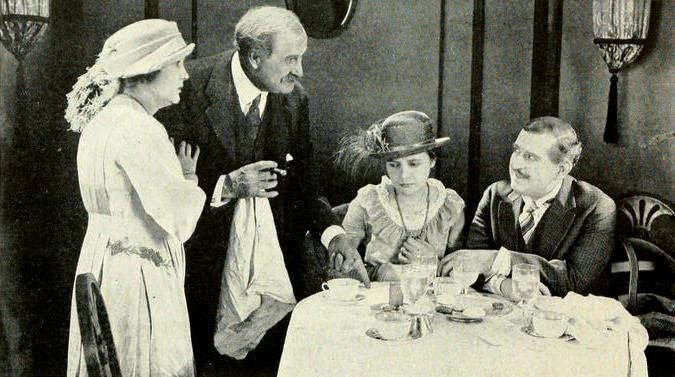
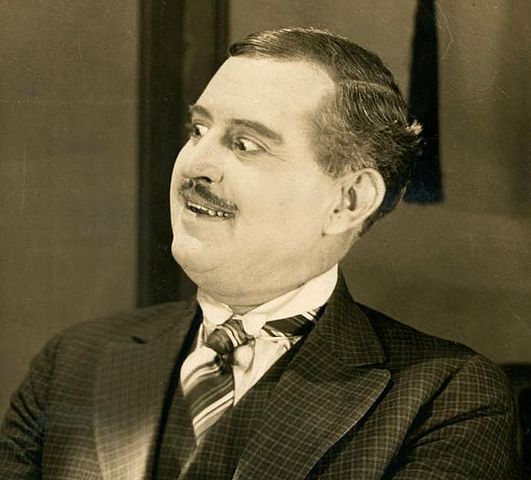
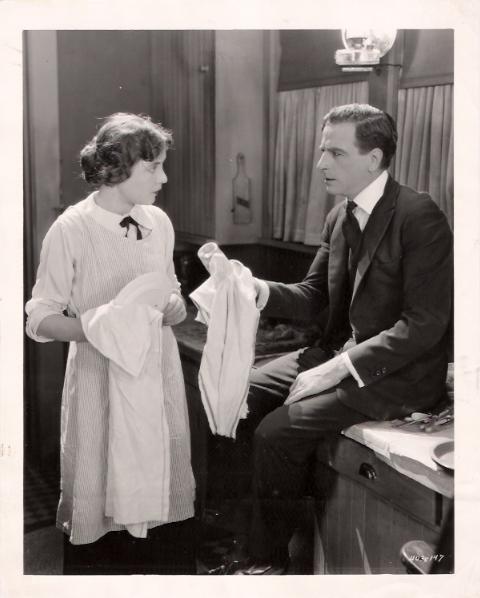
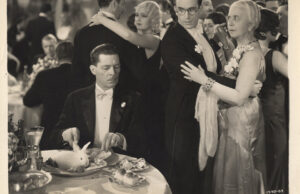
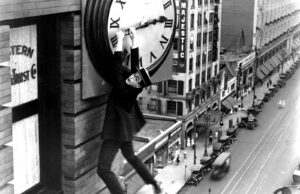
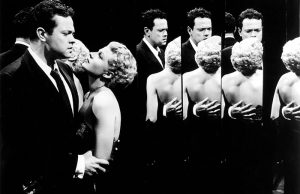






Leave a Reply